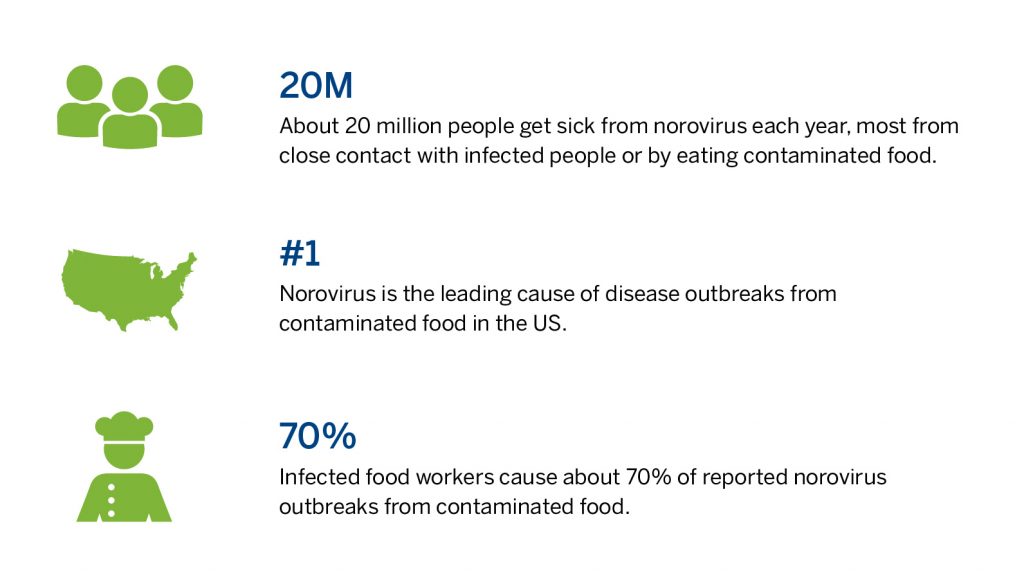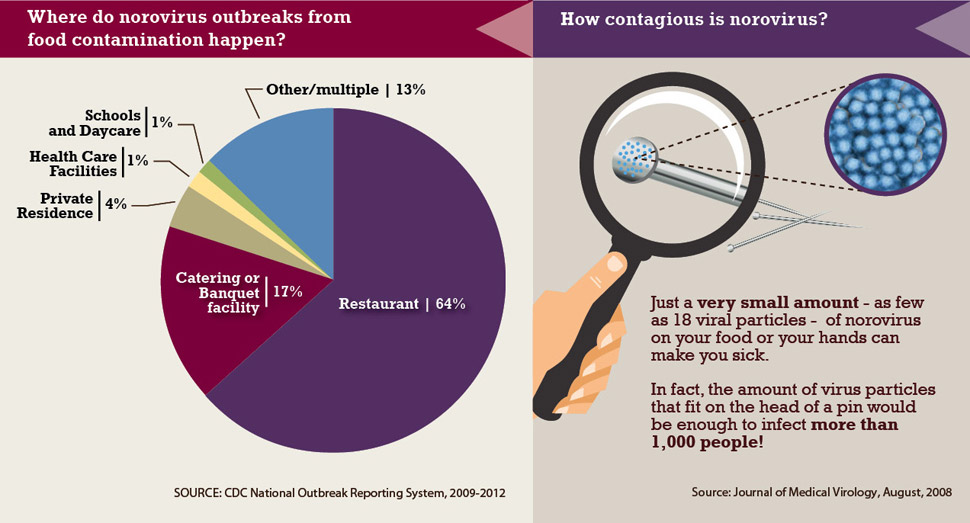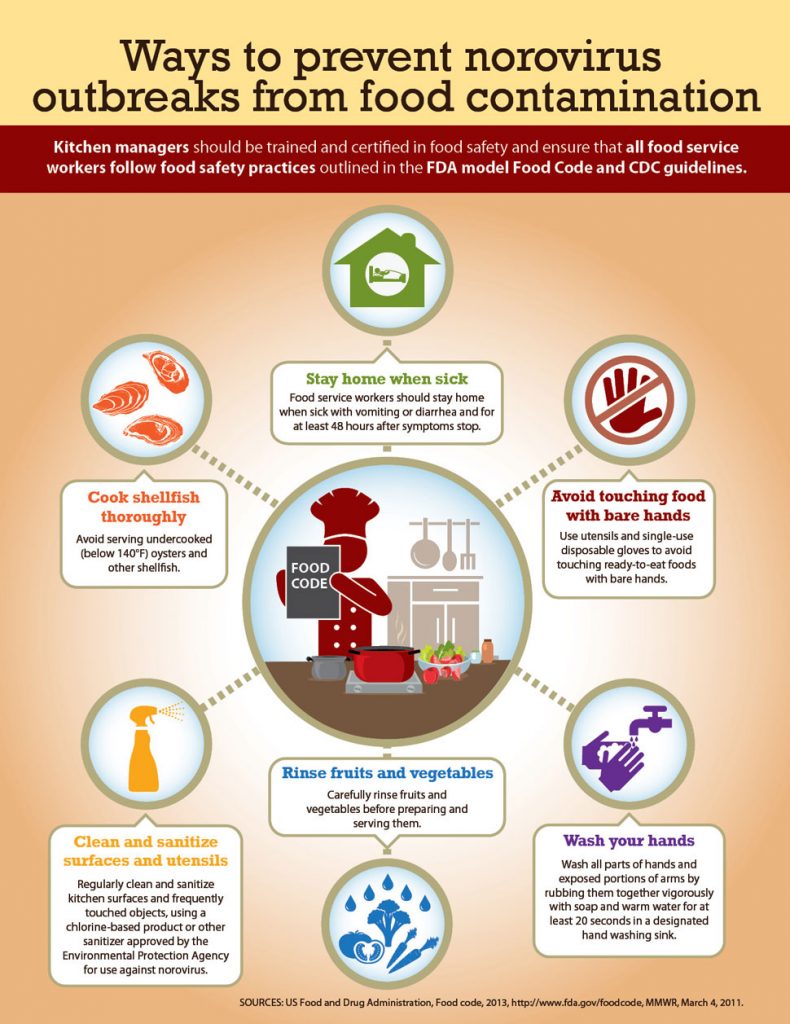By the bioMérieux Connection Editors
Norovirus is the leading cause of foodborne illness in the United States, causing an estimated 20 million cases of acute gastroenteritis each year. The Centers for Disease Control and Prevention (CDC) states that each year, norovirus leads to 400,000 emergency room visits and up to 800 deaths. It is also estimated that 1 in 14 children will visit an emergency room by the age of five, due to a norovirus infection. Norovirus can spread anywhere food is served and people gather; 70% of outbreaks come from food service settings, such as restaurants.

Most hospitals and doctor’s offices don’t test for norovirus, making it difficult to track. However, health departments are encouraged to report all suspected and confirmed norovirus outbreaks.
How Does Norovirus Spread?
Norovirus is highly contagious. The virus can be spread by consuming contaminated food or water, or by having contact with an infected person. It is transmitted through the smallest particles in a contaminated person’s stool or vomit. Food can be infected after being placed on a contaminated surface, handled by an infected worker, or even after being grown with contaminated water.
People infected with norovirus are most contagious while they display symptoms and during the first few days of recovery. However, studies have shown that those infected can still spread norovirus for two weeks or more after recovering. People can get norovirus multiple times throughout their lives because there are many types of the virus. Immunity from a specific type can develop, but it is unknown how long it lasts. Symptoms of norovirus are typically vomiting and diarrhea.

Why is Norovirus So Contagious?
It can be difficult to kill norovirus. The virus may resist many common disinfectants and remain on countertops and utensils for up to two weeks. It can remain on food until it reaches 140 degrees and at freezing temperatures. This may explain why the Federal Food and Drug Administration is on the look-out for norovirus in frozen foods, particularly frozen berries. For more information, read the full bioMérieux Connection article on the current FDA Frozen Berry Sampling.
Can You Prevent Norovirus?
The CDC recommends a number of ways the help prevent the spread of norovirus. These include washing hands thoroughly and refraining from prepping food while being sick. They also recommend reporting suspected illness from food to a local health department. Further recommendations relate specifically to the food service industry, including training workers and certifying managers in food safety practices.

To learn more about norovirus statistics, transmission, symptoms, and prevention, visit the CDC’s Preventing Norovirus Outbreaks page.
Opinions expressed in this article are not necessarily those of bioMérieux, Inc.



